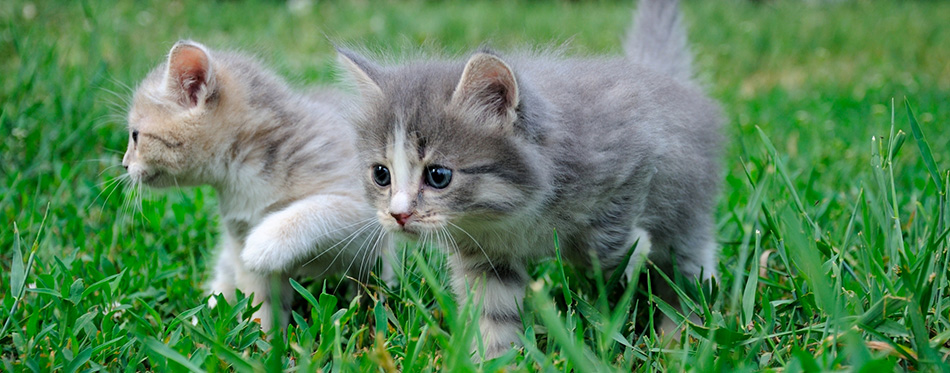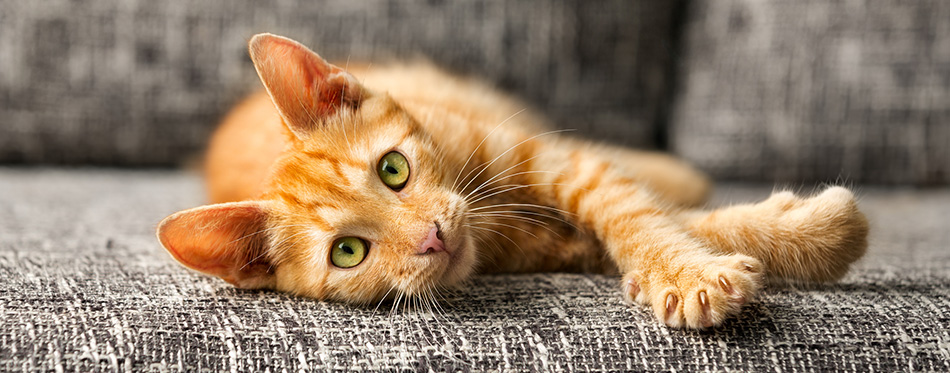We all know that growing up is hard work! A young cat’s body needs loads of energy to build new tissue and develop systems that will keep them safe and well as adults. Growth is rarely consistent; there are periods of rapid growth (a growth spurt) and periods of more sustained growth and some breeds have different growth patterns to others. Of course, eventually, they stop growing altogether and become adult cats.
We need to understand how cats grow so that we can make sure that we are adapting their diet to suit their needs. Kittens that are growing have different calorie and nutrient requirements to adult cats. So, how long do cats grow for? Here’s everything you need to know.

Cat Life Stages
The stages of a cat’s life are more complicated than a simple ‘kitten’ and ‘adult’ classification. Vets usually describe the life stages of a cat as:
- Kitten stage
From birth to six months of age. This is a period of rapid growth and is before sexual maturity.
- Junior stage
From six months to two years. Sometime during this period most cats reach their full size and learn how to survive as an adult cat.
- Prime stage
From three to six years. A keen hunter who is generally healthy and at peak reproductive age.
- Mature Stage
From seven to ten years. The equivalent to humans in ‘midlife’ and in their forties and fifties. Some health conditions can become apparent.
- Senior stage
Between 11 and 14 years. The same as a human in their seventies. There will be some slowing down of their metabolism and further health issues are possible.
- Geriatric stage
15 years and over. Many cats do not make it to this stage and those that do can have a lot of health issues. However, other geriatric cats are very sprightly indeed!
Kitten Growth and Development
From birth to eight weeks, a kitten undergoes the most rapid growth and development. At this time, they are feeding from their mother.
- Newborn
Kittens are born with their eyes closed and have to develop the ability to regulate their own body temperature. They sleep most of the time but they are growing in size and their organs and metabolism are maturing.
- One week
Kittens are larger, can hold their head up and can make noises. They are also starting to move their limbs.
- Two weeks
They are even bigger and their eyes and ears are developing. Now they start to move around, although they still sleep a lot.
- Three to four weeks
The kittens continue to grow in size and now have teeth. They now move around a lot and play with their littermates.
- Five to six weeks
At this age, the kittens become very active and continue to grow rapidly. Their mother’s milk is no longer enough to sustain this period of growth and development. You can start to feed them a ‘slurry’ of wet kitten food to supplement the milk.
- Seven to eight weeks
By this age, kittens are very agile and very active. They can be weaned onto a special kitten food that will provide them with all the nutrients that they need.
It is generally recommended that kittens remain on this food until they are about a year old but your vet can advise on what is best for your particular breed of cat.

Cat Breeds and Growth
Different breeds grow at different rates and stop growing at different ages. A very general estimate is that cats stop growing when they are around 18 months but that is just a ballpark figure. Here are some more specific estimates for different breeds.
This is one of the oldest cat breeds around and reaches seven to 18 pounds in weight and 16 to 22 inches in length when it is full grown. The surprising thing is that this breed can grow until they are three to five years old!
This breed is also known as the ‘small leopard’ and can reach up to 22 pounds in weight when they reach maturity although a weight of around 16 pounds is more typical. They stop growing between one and two years.
Find out more about Cat Food for Bengals here.
This is a hybrid breed which looks a little like a small cheetah. Fully grown, they can reach up to 20 pounds in weight and reach a length of 25 inches. You can expect them to stop growing at around two to three years of age.
Feeding a Growing Cat
Whilst your cat is still growing, they have particular nutritional requirements. They need a lot of calories and a lot of fat and protein, yet they only have tiny stomachs. This means they need nutrient-dense food that will provide all the goodness they need in small quantities. This is best provided by a commercial kitten food.
Most vets recommend that once your kitten is weaned, you feed them three or four times a day. They simply cannot get all the calories they need from one meal. At around six months of age, you can reduce the frequency of feeding to two meals a day.
Free feeding is another option for growing kittens. You do need to keep changing moist food because it can become dry and unpalatable and could attract insects and vermin. Once your cat has stopped growing, it is best to switch to regular meals as free feeding can result in obesity.
So, there is no simple answer to how long cats grow for. It very much depends on the breed and on your particular cat. The important thing is to provide the correct nutrition for the life stage that your cat is at and your vet can provide more information on this if you are not sure.

